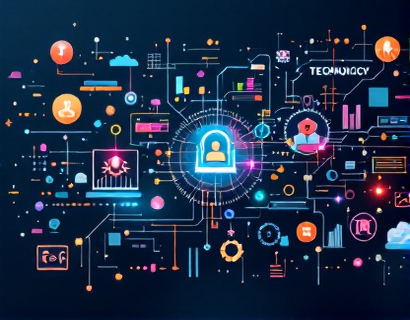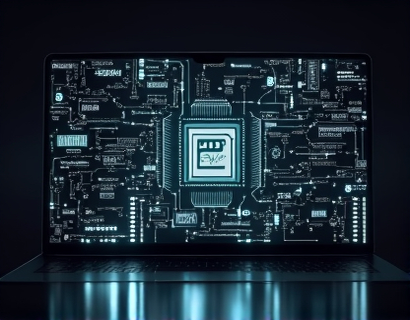Transforming Education with AI-Powered Chat Interfaces: Insights on Tokenization for All
In the rapidly evolving landscape of education, the integration of AI-powered chat interfaces represents a significant leap forward in how we access and understand complex topics such as tokenization. This technology not only simplifies intricate concepts but also makes them accessible and engaging for educators, students, and families alike. By leveraging advanced natural language processing and machine learning, these chat platforms provide verified insights and specialized knowledge, ensuring that users receive accurate and reliable information.
Understanding Tokenization: A Foundation for Educators
Tokenization, in the context of education and technology, refers to the process of breaking down information into smaller, manageable units or tokens. These tokens can represent words, phrases, or even more complex data structures, depending on the application. For educators, understanding tokenization is crucial as it forms the backbone of many modern educational technologies, including adaptive learning systems, natural language processing tools, and digital content management platforms.
Tokenization enables the creation of personalized learning experiences by analyzing and interpreting individual student interactions. By breaking down student performance data into tokens, educational software can identify patterns, strengths, and areas for improvement. This granular analysis allows educators to tailor their teaching methods and resources to better meet the needs of each student, fostering a more inclusive and effective learning environment.
Benefits for Students: Engaging and Interactive Learning
For students, the benefits of tokenization are manifold. An AI-powered chat interface can transform the learning experience by making it more interactive and engaging. Through natural language interactions, students can ask questions, receive explanations, and explore topics in a conversational manner. This approach not only enhances understanding but also boosts motivation and engagement.
Moreover, tokenization facilitates the creation of dynamic content that adapts to the student's level of knowledge and learning pace. For instance, a chat interface can present complex concepts like fractions or algebra in a step-by-step, token-based format, allowing students to grasp each part before moving on to the next. This method ensures that students build a solid foundation of knowledge, reducing the likelihood of confusion and frustration.
Family Involvement: Empowering Parents and Guardians
Tokenization also plays a vital role in involving families in the educational process. By providing parents and guardians with accessible, token-based insights into their child's learning journey, educational platforms can foster a collaborative environment. These insights can include summary tokens of daily activities, progress tokens indicating milestones achieved, and resource tokens pointing to additional learning materials.
Such transparency and accessibility empower parents to support their children's education more effectively. They can engage in meaningful discussions with educators, understand the technologies and methods used in the classroom, and provide consistent reinforcement at home. This alignment between home and school environments is crucial for optimal student development and success.
Ensuring Safety and Educational Value: Child-Friendly Versions
Recognizing the importance of safety and educational value, especially for younger users, the development of child-friendly versions of AI chat interfaces is essential. These versions are designed to provide age-appropriate content, ensuring that children can explore and learn without exposure to inappropriate or complex information.
The child-friendly chat interface uses simplified language and visual aids to explain tokenization and related concepts. It also incorporates safety features such as strict content filtering, limited interaction options, and parental controls. This ensures that children can benefit from the educational tools while remaining in a secure and controlled environment.
Content Verification: Building Trust and Accuracy
A critical aspect of any AI-powered educational tool is content verification. Ensuring the accuracy and reliability of the information provided is paramount, especially when dealing with complex topics like tokenization. The platform employs rigorous verification processes, cross-referencing data from trusted sources and incorporating feedback from subject matter experts.
This commitment to accuracy builds trust among users, whether they are educators seeking professional development resources, students looking for reliable information, or parents wanting to understand their child's education better. By providing verified insights, the platform helps users make informed decisions and deepen their understanding of tokenization and its applications in education.
Future-Focused Insights: Staying Ahead in Education
As education continues to evolve, staying informed about the latest trends and technologies is essential. An AI-powered chat interface offers future-focused insights that keep educators, students, and families ahead of the curve. By providing up-to-date information on tokenization and related educational technologies, the platform helps users adapt to and embrace new tools and methodologies.
For educators, this means staying informed about the latest research, best practices, and technological advancements that can enhance their teaching strategies. For students, it provides access to cutting-edge resources and learning tools that prepare them for a technology-driven future. For families, it ensures they are well-informed about the educational landscape and can support their children's learning journey effectively.
Interactive and Accessible Learning Experiences
The AI chat interface not only delivers informative content but also creates interactive learning experiences. Through conversational interactions, users can explore tokenization and related concepts in a dynamic and engaging way. This approach caters to different learning styles, making the material more accessible and memorable.
For example, a student struggling with a particular concept can ask the chat interface to explain it using different tokens or examples. The chat can respond with visual aids, analogies, or step-by-step breakdowns, depending on what best suits the student's understanding. This flexibility ensures that each user receives a personalized learning experience, enhancing both comprehension and retention.
Conclusion: Embracing the Future of Education
In conclusion, AI-powered chat interfaces represent a transformative force in education, particularly in the realm of tokenization. By providing verified, accessible, and interactive insights, these platforms empower educators, students, and families to navigate the complexities of modern education with confidence. The child-friendly versions ensure that even the youngest learners can benefit from these advancements, fostering a safe and engaging learning environment.
As we look to the future, the integration of AI in education will continue to grow, offering even more innovative solutions and opportunities. Embracing these technologies is not just about keeping up with the times; it's about shaping a brighter, more inclusive educational landscape for all.










































